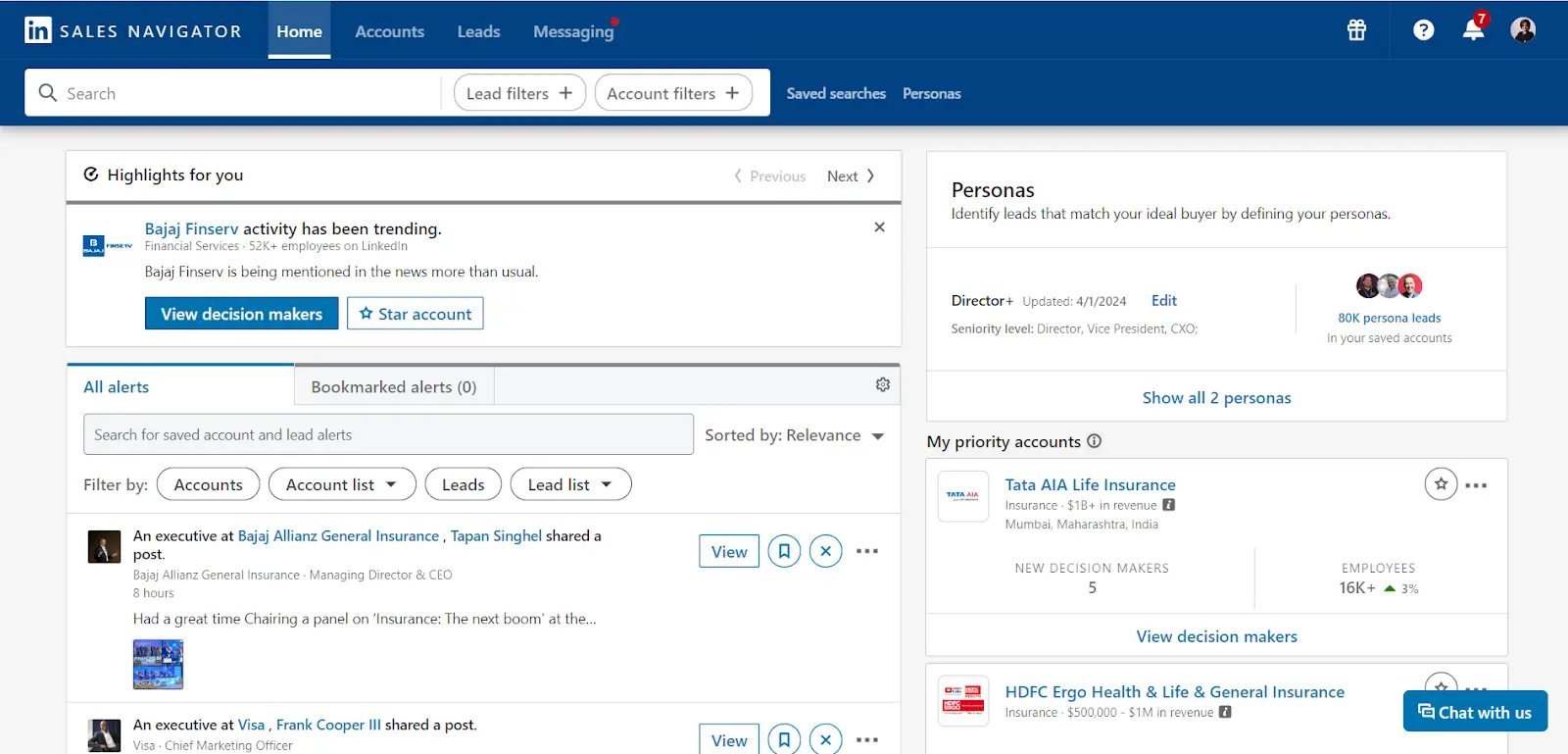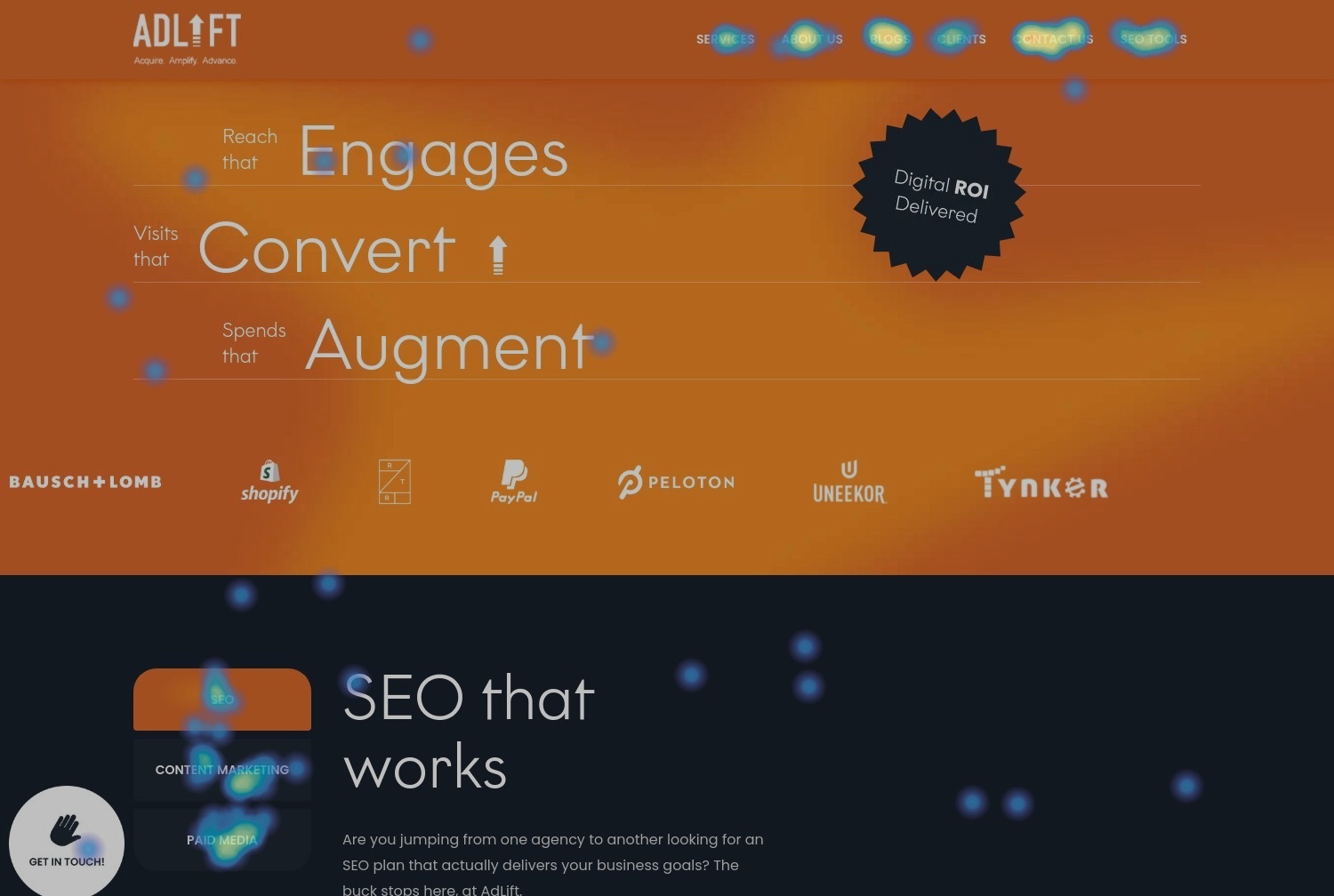From Traffic to Website Leads: Maximize Your Conversion Rate

In the digital age, turning website traffic into leads is a fundamental challenge that every business faces. Research highlights the significance of this process: companies that excel in lead nurturing generate 50% more sales-ready leads at a 33% lower cost compared to their peers. This statistic underlines the importance of understanding and optimizing your lead generation strategies to maximize business growth.
So, what exactly is a website lead, and why is it so critical for businesses of all sizes? A website lead is a visitor who has shown interest in your products or services, typically by taking a specific action such as subscribing to a newsletter, filling out a contact form, or downloading content. These leads represent potential customers who are further along in the buying process.
For businesses, generating leads is a continuous process of attracting, engaging, and converting visitors into customers. Without a steady stream of qualified leads, your sales funnel dries up, leaving you with fewer opportunities to generate revenue.
To convert traffic into website leads effectively, businesses need to implement strategies that focus on maximizing conversion rates. Conversion rate optimization (CRO) is about understanding your visitors, tracking their journey, and enhancing their experience to drive them toward becoming leads. In this blog, we’ll explore essential tactics to transform your website traffic into valuable leads, ensuring sustained growth and profitability.
Understanding Website Leads
A website lead is any visitor who shows interest in your products or services by performing a specific action. These actions are crucial in understanding how to find leads for your business. Common types of website leads include:
- Email Subscribers: These are visitors who provide their email addresses in exchange for valuable content, such as newsletters, updates, or special offers. Email subscribers are a crucial type of lead because they allow you to communicate directly with potential customers.
- Contact Form Submissions: These leads have taken a more significant step by filling out a form to request more information, a quote, or a demo. This shows a higher level of interest and intent to engage further with your business.
- Content Downloaders: These visitors access gated content like ebooks, whitepapers, or case studies. By providing their contact details, they demonstrate a willingness to engage more deeply, making them valuable leads for nurturing campaigns.
Understanding these leads is essential when figuring out how to get leads for your business because they represent potential customers who are already invested in your offering.
What is a Conversion Rate?
A conversion rate is the percentage of website visitors who complete a desired action, such as filling out a form or making a purchase. It is calculated using the formula.
Conversion Rate = (Total Conversions / Total Visitors) × 100
Conversion rates can vary significantly across industries. According to WordStream, the average landing page conversion rate in the US is 2.35%, but high performers can achieve rates of 11.45% or higher. It’s important to know your industry’s benchmarks to set realistic goals and measure the effectiveness of your lead generation strategies. Understanding these benchmarks is not just about comparing your performance against others, it provides a target for you to aim for as you refine your CRO strategies.
Improving your conversion rate isn’t just about achieving vanity metrics. It directly impacts the number of website leads you generate, which in turn drives higher revenue and a better return on your marketing investments. Focusing on CRO can help you make the most out of your existing traffic, turning more visitors into valuable leads.
The Conversion Funnel
The conversion funnel is a powerful tool that visualizes the typical customer journey, illustrating how visitors move from initial awareness of your brand to making a purchase decision. Understanding this funnel is crucial for identifying where your potential leads are dropping off and what steps you can take to maximize conversions.
Top of Funnel (TOFU)
At the top of the funnel, visitors are exploring your brand for the first time. They might have come across your website through search engines, social media, or paid ads. At this stage, the goal is to capture their attention and pique their interest. Content plays a vital role here—blogs, social media posts, and videos can attract a wider audience. The focus should be on building awareness and generating initial interest.
Middle of Funnel (MOFU)
Once visitors are aware of your brand, they move to the middle of the funnel, where they start evaluating your offerings. At this stage, they compare your products or services to those of your competitors. Here, your objective is to nurture their interest and build trust.
This can be achieved through informative content, such as case studies, webinars, and in-depth articles that highlight the benefits and unique selling points of your offerings. Lead magnets like ebooks and free trials can also be effective in engaging visitors who are evaluating their options.
Bottom of Funnel (BOFU)
At the bottom of the funnel, visitors are ready to make a decision. Your goal is to make it as easy as possible for them to take the next step—whether that’s making a purchase, requesting a demo, or contacting you for more information. Clear and compelling calls to action (CTAs), straightforward navigation, and a seamless checkout process are key to converting these visitors into leads. Testimonials, reviews, and trust signals can further reassure prospects and encourage them to take action.
Analyzing Drop-Offs
The conversion funnel is not always a straightforward path. Many visitors drop off at different stages, abandoning the journey before completing a conversion. By using analytics tools, you can identify where these drop-offs occur and investigate the reasons behind them.
Perhaps your landing pages are confusing, or your checkout process is too complex. Addressing these issues is critical for improving your conversion rate and turning traffic into website leads.
Strategies to Increase Website Leads
Converting traffic into leads requires a well-thought-out strategy that combines compelling content, optimized landing pages, and effective CTAs. Here are some key tactics to increase your website leads:
Compelling CTAs
A Call to Action (CTA) is a prompt on a website that tells the user to take some specified action. Effective CTAs are crucial for converting visitors into leads. Here’s how to make your CTAs more compelling:
- Placement: Position your CTAs strategically. The most effective placements are above the fold, at the end of blog posts, and in the sidebar. Make sure they are easy to find without scrolling.
- Design: Use contrasting colors to make your CTAs stand out. The design should be clean, with clear, easy-to-click buttons.
- Wording: Use action-oriented verbs like “Get Started,” “Download Now,” or “Subscribe Today” to encourage visitors to take the next step.
- A/B Testing: Experiment with different versions of your CTAs to see which ones resonate best with your audience. A/B testing can help you optimize both the design and wording to maximize conversions.
Channels
Choosing the right channels to promote your CTAs and content is also crucial for generating leads. Some effective channels include:
- WhatsApp: WhatsApp is very popular and has an average open rate of 98%. This makes it a great way to connect with potential leads in a personalized and direct manner. With tools like Wati and MessageBird, you can engage with potential leads in a more personal and direct way.
- LinkedIn: LinkedIn’s professional network is ideal for B2B lead generation. Share valuable content, participate in relevant groups, and leverage LinkedIn Sales Navigator to identify and connect with decision-makers. Dripify and Dux-Soup are excellent tools for automating LinkedIn lead generation. You can use these tools to reach out to potential leads, build relationships, and drive traffic to your website.
- Facebook/Instagram: These platforms offer various ad formats to reach a wider audience and capture leads through lead-generation ads or by driving traffic to landing pages.
- Google Ads: Google Ads allows you to target users actively searching for solutions related to your offerings, ensuring that highly qualified leads see your ads.
- YouTube: Video content is highly engaging and can help you capture leads by providing valuable information and demonstrating your expertise. Include CTAs in your videos and descriptions to drive traffic to your website.
Landing Page Optimization
Your landing page is often the first interaction a visitor has with your business, making it a critical component of your lead generation strategy. Here are some tips for optimizing landing pages:
- Message Match: Ensure consistency between your ads and landing pages. The messaging and offer should align seamlessly to avoid confusing visitors and increase leads and conversions.
- Value Proposition: Clearly communicate the benefits of your product or service. Visitors should immediately understand what they will gain by taking the desired action.
- Social Proof: Include testimonials, case studies, and awards to build trust and credibility. Social proof can reassure visitors and increase their likelihood of converting.
- Mobile-First Design: With a significant portion of web traffic coming from mobile devices, it’s essential to ensure your landing pages are optimized for mobile users. A responsive design, fast loading times, and easy-to-click buttons are crucial for a smooth mobile experience.
Lead Magnets and Incentives
Lead magnets are incentives you offer to potential leads in exchange for their contact information. Effective lead magnets include:
- Ebooks, W
- hitepapers, and Guides: Create detailed content that addresses your audience’s problems. Research shows that 80% of users would give their email addresses to receive a white paper or ebook to get helpful information that can assist them in making smart choices.
- Webinars and Workshops: Businesses should offer live training sessions or workshops to engage with their audience in real-time. These events provide an opportunity to showcase your expertise and build trust. Moreover, a really good conversion rate for webinars and workshops is somewhere around 25%. This means every 1 in 10 attendees clicks your CTA button and takes the desired next step—for example, signing up for a one-on-one demo, downloading an e-book, or booking a meeting.
- Discounts and Free Trials: Offering a discount or free trial can be a powerful motivator for visitors to try your product or service. Even statistics indicate that discounts and free trials can result in as much as a 66% increase in B2B conversions. This tactic works particularly well for e-commerce and software businesses.
These strategies not only help you increase website leads but also provide free website leads through organic channels like SEO and content marketing, which we will explore next.
The Role of Content Marketing in Lead Generation
Content marketing plays an important role in attracting and converting website leads. By providing valuable information that addresses your audience’s needs, you can build trust and establish your brand as an authority in your industry.
Valuablex Content
Creating high-quality content is key to engaging your audience and encouraging them to become leads. Blog posts, articles, videos, and infographics that address common pain points or provide solutions can attract visitors who are looking for answers. This type of content not only drives traffic but also positions your brand as a trusted resource.
SEO Optimization
To attract relevant traffic, your content needs to be optimized for search engines. Keyword research helps you understand what your audience is searching for, allowing you to create content that meets their needs. On-page SEO techniques, such as optimizing meta tags, headers, and images, can improve your rankings and drive more traffic to your site. Additionally, building backlinks from reputable sources can further boost your SEO efforts.
Social Media Promotion
Sharing your content on social media platforms can drive traffic and increase leads and engagement. Each platform has its unique audience, so tailor your content accordingly. Engaging with your followers through comments and shares can also help build a community around your brand, further increasing your reach and lead generation potential.
Measuring and Analyzing Your Results
To continually improve your lead generation efforts, it’s essential to measure and analyze your results. This helps you understand what’s working, what’s not, and where adjustments are needed.
Key Metrics to Track
There are several key metrics you should monitor to gauge the effectiveness of your lead generation strategies:
- Conversion Rate: This measures the percentage of visitors who become leads. Tracking this metric helps you understand how well your website is converting traffic into leads.
- Bounce Rate: A high bounce rate indicates that visitors are leaving your site without taking any action. Analyzing this metric can help you identify pages that need improvement.
- Time on Page: The amount of time visitors spend on your page can indicate how engaging your content is. Longer times suggest that visitors are finding your content valuable.
- Cost per Lead: Understanding how much it costs to generate each lead can help you assess the efficiency of your marketing spend.
Tracking these metrics will help you understand the relationship between traffic and leads and adjust your strategy accordingly.
Tools and Platforms
There are various tools and platforms available to help you measure and analyze your lead generation efforts:
- Google Analytics: This is a powerful tool for tracking visitor behavior, conversion rates, and other key metrics. It provides insights into where your traffic is coming from and how visitors are interacting with your site.
- Heatmaps: Tools like Hotjar provide visual representations of where visitors are clicking on your site. This can help you identify popular areas and optimize your page layout.
The heatmap shows us clicks, moves, and scroll stats of the page. It helps us understand user engagement by visualizing where users click most often, how they move their mouse, and how far they scroll down the page.
- A/B Testing Software: Platforms like Optimizely allow you to run A/B tests on different elements of your site, helping you determine what works best for your audience.
Continuous Improvement
According to Rishabh Mahendru, VP of Client Success and Growth at AdLift, lead generation is an ongoing process that requires regular monitoring and refinement. He says, “We believe that a dynamic approach to lead generation is key to sustained growth. By consistently refining our strategies based on real-time data, we ensure that our clients not only attract the right audience but also convert them into loyal customers.”
Maximizing Your Website Leads for Business Growth
Maximizing your conversion rate and generating more website leads requires a strategic approach that combines compelling content, optimized landing pages, effective CTAs, and continuous measurement and refinement. By understanding the different stages of the conversion funnel, implementing targeted lead generation strategies, and regularly analyzing your results, you can turn more traffic into valuable leads and drive sustained growth for your business.
Lead generation is not a one-time effort but an ongoing process that evolves with your audience and market trends. Stay proactive, keep refining your strategies, and don’t hesitate to try new tactics to find what works best for your business. Implement these strategies today and start seeing the difference in your lead generation efforts. Start your journey with us at AdLift, and our team of experts will create strategies that will work best for your business.
Categories
Recent Posts
- 6 AI for E-commerce Tips Every CMO Needs to Know in 2025 February 12, 2025
- Advertising Trends 2025: What Decision-Makers Need to Know February 12, 2025
- The 2025 Playbook: Using Free Chat GPT to Streamline Corporate Decision-Making February 12, 2025
- DeepSeek: The Chinese AI Startup Disrupting the Global Tech Industry January 31, 2025
- Visual Search in Online Shopping: The Future of Retail in 2025 January 29, 2025
- Enterprise SEO Challenges and How Business Leaders Can Overcome Them January 29, 2025
- Boost Your Website’s Visibility with These Must-have B2B SEO Tools January 13, 2025
- Master Your Digital Strategy: Learn the 7 Types of SEO That Lead to High Rankings January 13, 2025
- 2024: A Year to Remember at AdLift! January 7, 2025
- How to integrate your SEO and paid search strategies to maximize efficiency and reduce CAC January 6, 2025
Get
in Touch
Contact AdLift for a 360-degree marketing plan





